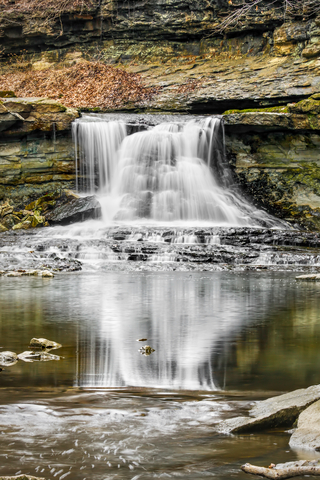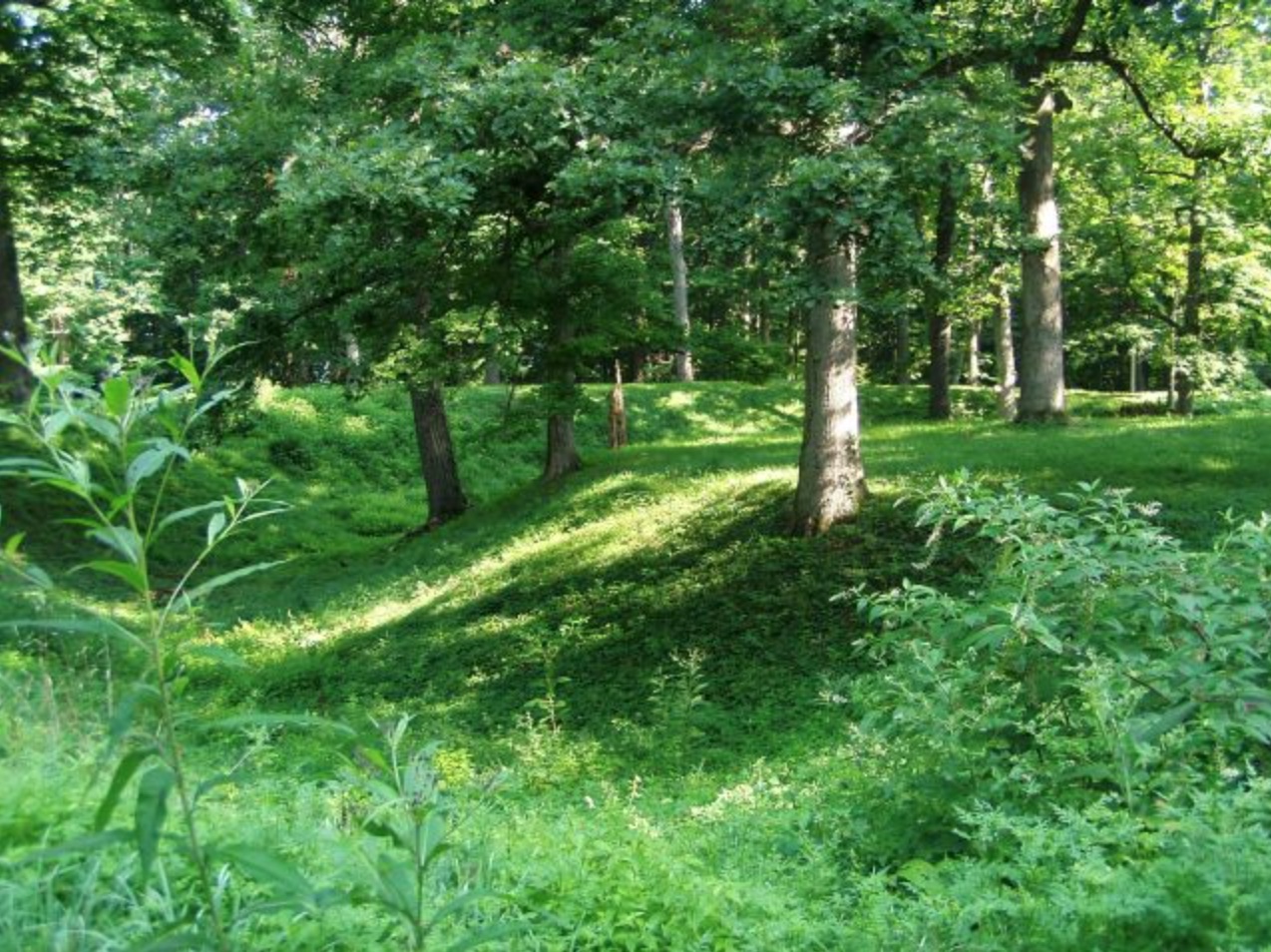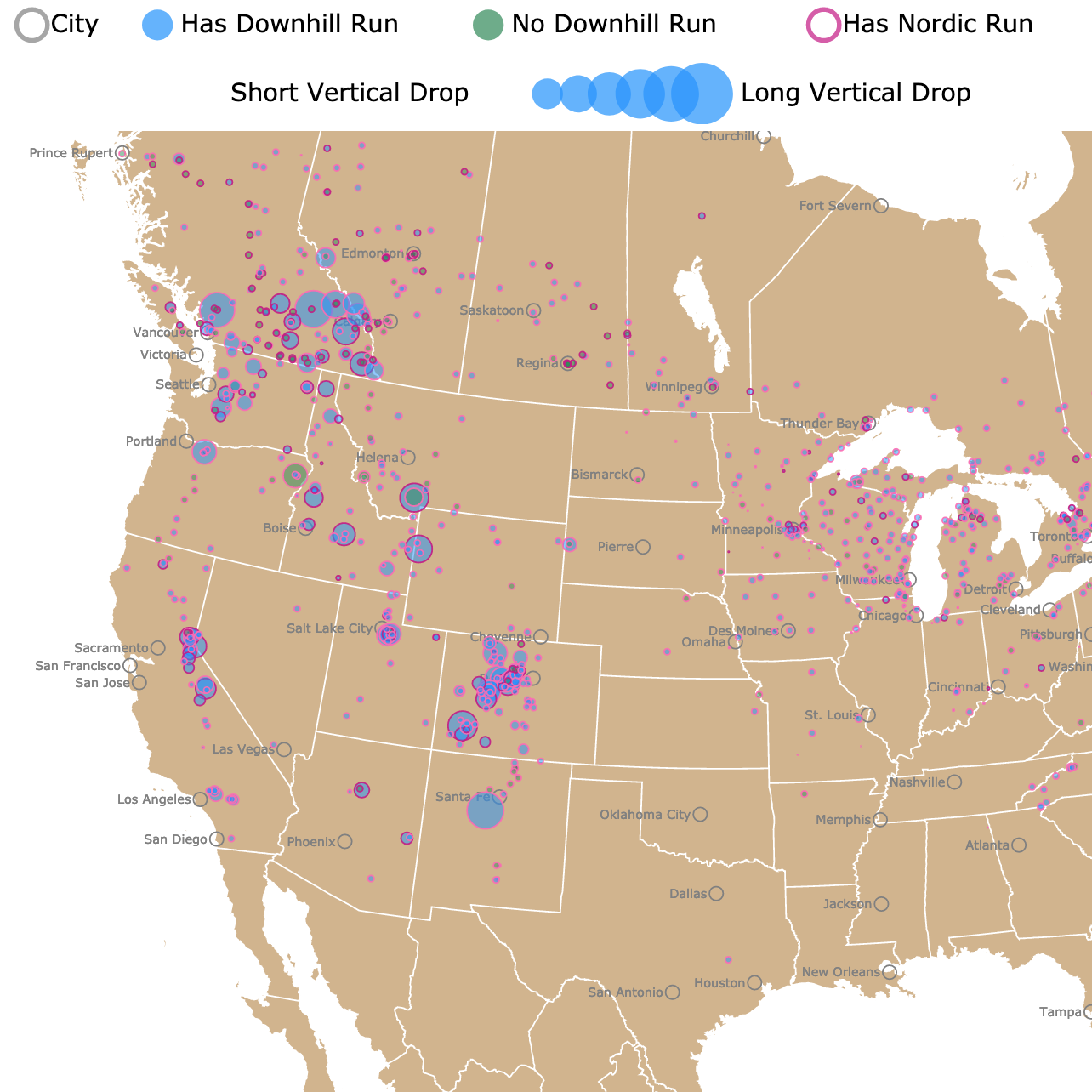Map of Indiana's Protected Areas
This interactive map shows the Locations, Names, Areas, and Details of National Parks, State Parks, National Forests, Tribal, and other Public Lands of Indiana. It also shows major cities and rivers for context. For more detail, zoom in. For more information, hover over the map, or scroll down.
| Key | |
|---|---|
| Lake or River | |
| ◯ | City |
| Manager | |
| National Park Service | |
| State | |
| U.S. Forest Service | |
| Fish and Wildlife Service | |
| Tribal Lands | |
| Bureau of Land Management | |
| Department of Defense | |
| U.S. Army Corps of Engineers | |
| Other | |
Indiana's Geography
Indiana is known as the Hoosier State. It's about 270 miles (434km) north to south and 140 miles (225km) from east to west.
Indiana is the 38th largest state in the U.S. and the 14th in population.

Indiana is bordered on the north by the beautiful Lake Michigan and the state of Michigan. To the south, you'll find the border of Kentucky; to the east is Ohio and in the west is Illinois.
Aside from Indianapolis, the state's capital, some of the largest cities are Fort Wayne, South Bend, Hammond, Gary, Lafayette, and Anderson.
A majority of Indiana experiences a humid continental climate with four distinct seasons. The result is long summers and cool winters. The state's southernmost region has a humid, subtropical climate with frequent rainfall and less frigid winters.
Northern Indiana can experience up to 40 inches (101 cm) of snow during the winter. Still, the southern portion rarely gets over 10 inches (25 cm) a year.
The temperatures range between 70 to 80 degrees Fahrenheit (21 to 26 degrees Celsius) in the highs, The lows range from 25 to 35 degrees Fahrenheit (-4 to 2 degrees Celsius).
Indiana experiences a yearly precipitation of about 40 inches (101 cm), and the chances for tornadoes during the spring are likely.
The state of Indiana is divided into three different regions: the Till Plains in central Indiana, the Great Lakes Plains of northern Indiana, and the Lowlands or Southern Plains in the state's southern region.
The landscape varies from flat to gently rolling regions, interspersed with lakes and bogs. The Great Lakes Plains have large sandy dunes along the shores of Lake Michigan, and the coils are generally shades of grays and browns.

Over 4-million acres of Indiana's lands are broadleaf forests, including the Oak-Hickory Forest, Beech-Maple Forest, the Southern Floodplain Forest, and the Elm-Ash Forest.
You can find tulip trees, as well as hickory, oak, maple, spirea, barberry, and ash trees. Wildflowers, including the peony, daisy, and violet, are abundant and beautiful.
The wildlife in Indiana consists of raccoons, gray foxes, coyotes, rabbits, squirrels, muskrats, whitetail deer, weasel, and minks. The bobcat and badger are identified as endangered species in the state.
Look to the sky, and you'll find wild turkey, ruffed grouse, sparrows, blue jays, wrens, and pheasant. Indiana is home to 75 endangered birds, including the peregrine falcon, bald eagle, and Kirtland's warbler.
Indiana is a major industrial center specializing in the iron, oil, and steel product industries. Bituminous coal is a significant source of revenue for the state, mainly in the southwestern area. Transportation equipment, vehicles, and equipment are produced in the Hoosier state.
Some of the major crops grown in Indiana are corn, wheat, oats, soybeans, and rye. Livestock, mint, hay, tobacco, popcorn, fruit, tomatoes, and onions are all grown agriculturally throughout the state.
Top Parks and Forests in Indiana
Indiana Dunes National Park
The Indiana Dunes National Park is the red strip that spans 15 miles of the southern shores of Lake Michigan. Visitors love scouting the area for rare bird species and flying kites on the sandy beach.

There are over 50 miles of trails for hikers to explore. Experience the rugged dunes, sunny prairies, forests, cool rivers, and mysterious wetlands at the park.
The park offers tons of outdoor recreational activities like camping, biking, bird and wildlife watching, horseback riding, and even hosting winter events. The historic sites are a great way to learn about the history of the people and places of the area, Indiana Dunes.
Hoosier National Forest
The Hoosier National Forest is composed of green areas located in the hills of south-central Indiana. This forest is within a two-hour drive of Evansville, Louisville, Cincinnati, and Indianapolis.
The rolling hills, rural crossroad communities, and back-country trails make this 204,000-acre forest a local gem.
Hoosier National Forest visitors come from surrounding states and beyond for the tranquil setting and trails.

Fishing and hunting are allowed with proper permits. Horseback riding is also permitted for visitors who bring horses and enjoy a trot down the equestrian trails.
There are primitive camping sites, developed campgrounds, and cabins to spend a night or two.
Hardin Ridge Recreation Area is a hot-spot at Hoosier National Forest. You'll find hiking and biking trails, as well as a public beach for swimming, a boat ramp, picnic areas, and beautiful campsites, Visit Bloomington.
The town of Bloomington holds fun-filled events throughout the year. You can find live music festivals, including the Lotus Music Arts Festival, during the fall. There is definitely a lot to do whether you're in the National Forest or surrounding towns.
Turkey Run State Park
Turkey Run State Park is the lime green unit west of Indianapolis. Thanks to its location, this park gets over a million visitors every year.
The park offers over 60 rooms at the inn, which can be booked up to a year ahead. Pricing ranges between $115 to $180 per night. Over 20 rental cabins and 213 campsites are available as well.

Turkey Run offers over 14 miles of hiking trails ranging from easy to rough and rugged. Visitors enjoy horseback riding, picnics, and picnics.
The Nature Center offers several incredible displays, a wildlife watching room, interactive exhibits, and scheduled educational programs for the youth.
The Olympic-size swimming pool is the place to be during the summer months. The pool is complete with a bathing house and wadding area.
History lovers appreciate the historic sites around the park. Sports enthusiasts enjoy the ball courts, as well as the opportunity to go canoeing and kayaking.
The park hosts various events throughout the year. These events change, so if you're interested, keep an eye on the events board posted online.
The themed camping weekends put a fun spin on a weekend out. Guided tours allow you to learn more about the wildlife and nature surrounding.
The hiking trails are legendary for their stunning views. The deep canyons are nestled in the sandstone cliffs, and the hemlock groves are worth seeing.
Crossing the suspension bridge over Sugar Creek is necessary to access many of the trails but be warned, you'll have to take 70 steps down to the bridge.
Pokagon State Park
Pokagon State Park is situated in the northeastern corner of Indiana and is represented in lime green, just off I-69 near Angola.

This park was originally called Lake James State Park back in 1925. However, the park's name was changed to Pokagon in recognition of the rich Native American heritage surrounding the region.
The Potawatomi Inn gets its name from the Native Americans that called the area home. The inn is one of the Midwest's most popular resorts and conference centers. The Potawatomi Inn offers an up-north fishing-lodge theme that visitors seem to love.
Pokagon is one of the state's original parks. It features the interesting work of the CCC or Civilian Conservation Corps. The boys of the CCC were involved with the building of structures throughout the Great Depression, Civilian Conservation Corps.
The park's natural lakes were greeted by glaciers that melted somewhere around 15,000 years ago.
Pokagon Park is framed by Snow Lake and Lake James, offering an abundance of opportunities for swimming, fishing, stunning sunset views, and boating.
This Indiana State Park becomes a winter wonderland in the winter with cross-country skiing, sledding, ice fishing, and the twin-track toboggan run.
You can experience the toboggan run on the weekends from the Friday after Thanksgiving through February.
McCormick's Creek State Park
McCormick's Creek State Park is the lime green park located northwest of Bloomington.

McCormick's Creek State Park offers a spectacular limestone canyon to explore, scenic waterfalls, and a flowing creek. The hiking trails feature diverse forest trees, native wildflowers, and spicebush.
There's a trail through the Wolf Cave Nature Preserve, as well as an accessible trail at the nature center.
History lovers enjoy climbing the fire tower, exploring the shelter house, and crossing the stone arch bridge.
The historic Statehouse Quarry is located near White River. The lobby of Canyon Inn is open to all park visitors, and they can also enjoy bird watching from the dining room's porch.
Cultural events take place at the park amphitheater, and there are also several special events hosted throughout the year.
The summer brings visitors to the pool for a dip in the cool refreshing water.
The park offers several activities such as hiking, a recreation center, horseback riding trails, picnic shelters, and tennis courts.
Stick around and camp out at one of the campground sites. There are 32 primitive sites, as well as 189 developed sites with electricity.
Clifty Falls State Park
Clifty Falls State Park is located in southeastern Indiana, on the shores of the Ohio River.
One of the park's main attractions is the incredible waterfalls. They seem to change moods with the weather and seasonal shifts. The falls can range from roaring plunges to a delicate bridal-veil mist, and in the winter they become gleaming frozen titans!

Spring and winter visits to Clifty Falls reveal the waterfalls at their best. Clifty Canyon offers excellent opportunities for year-round hiking and scenery. The waterfalls and streams are enough to draw a crowd on their own, Clifty Canyon.
The creek's stony bed is littered with all sorts of fossil remnants reminding visitors of a time from the past. The long-vanished marine ecosystem that was once teeming with life included ancestral squids, brachiopods, and ancient corals.
Visitors can look but can't collect, as fossil collecting within the park is prohibited. However, nearby locations are readily accessible for those who want to bring a souvenir home.
The Lanier State Historic House, located in Historic Madison, is a mansion. Enjoy a scenic drive along the Ohio River and catch a glimpse of the stunning architecture.
The park hosts special community events, including the July Regatta hydroplane boat race and the Madison Chautauqua Festival of Art.
Many visitors who plan day trips book a campsite because there is so much to explore. This park doesn't seem to be on the top of the list, but it's definitely a place worth visiting if you're in the state of Indiana.
Chain O'Lakes State Park
The Chain O'Lakes State Park is situated northwest of Fort Wayne and depicted in lime green.
If you are looking for raw, natural beauty, the Chain O'Lakes State Park is the place to explore.

The lake is a small boater's paradise dream. There are nine connecting lakes for visitors to enjoy and paddle through.
The park also offers an electric-motors-only lake, which isn't always common in areas like this.
With 23 miles of forested trails, there's also something for hikers to explore.
The forested hillside family cabin is available, but book it before it's taken. The park's historic one-room schoolhouse is a key point. The Nature Center offers an interactive display and educational points.
Go for a picnic, visit the beach, and get your campsite ready because adventures are waiting to be had at this beautiful place.
Mounds State Park
Mounds State Park is depicted in lime green and southwest of Muncie, off of I-69.
The park features ten unique earthworks built by the Native Americans known as the Adena-Hopewell people. The largest earthwork is the Great Mound, which is believed to have been constructed sometime during 160 B.C.

Archeological surveys explain that the mounds were used as a place to gather for religious ceremonies. The location was chosen for the ceremonies because the astronomical alignments could be seen from the area.
Stop in the Nature Center to check out the wildlife viewing room, interactive games, animal displays, and much more.
Take the kids or yourself on a naturalist-led hike or get involved with the interpretive programs during the weekend Mounds SP.
Affiliate Disclosure
Databayou.com is a participant in the Amazon Services LLC Associates Program, an affiliate advertising program designed to provide a means for sites to earn advertising fees by advertising and linking to Amazon.com. Databayou.com also participates in affiliate programs with Clickbank, CJ, and other sites.
If you plan on visiting one of these parks or hiking up some trails, I suggest you get some of these items found on Amazon.
- LED Headlamp: Rechargeable, bright, light, waterproof and adjustable for kids and adults.
- Dome Tent: This 9 person water resistant tent can fit 3 queen size air matresses has pockets and lantern hooks.
- Camping Kit: Includes camping lantern, fan, and cookware.
Resources for Indiana's Protected Areas Map
The shapefiles with Indiana's state boundary lines, major rivers, and cities were downloaded from Natural Earth Data.
The Parks and Public Lands shapefiles for Indiana were downloaded from USGS.
This map will be updated with new data! To receive updates on this and more nature maps join my email list!!!!!!!
Made by Luz K. Molina with D3.js.





